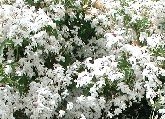 There are over two hundred species of true jasmine belonging to the genus Jasminum, a member of the olive family. They are tropical and subtropical vines or shrubs with only a few species hardy enough to grow in northern temperate gardens. Several plants such as Asian star jasmine (Trachelospermum asiaticum) and Carolina jasmine (Gelsemium sempervirens) share the name of jasmine and are very fragrant but botanically are not true jasmines. The name jasmine comes from the Arabic,”yasmin” meaning “gift of God”.
There are over two hundred species of true jasmine belonging to the genus Jasminum, a member of the olive family. They are tropical and subtropical vines or shrubs with only a few species hardy enough to grow in northern temperate gardens. Several plants such as Asian star jasmine (Trachelospermum asiaticum) and Carolina jasmine (Gelsemium sempervirens) share the name of jasmine and are very fragrant but botanically are not true jasmines. The name jasmine comes from the Arabic,”yasmin” meaning “gift of God”.
True jasmine vines are either evergreen or deciduous and have white or yellow, more rarely pinkish, fragrant flowers about one inch wide. The flowers may be solitary in clusters of three or more flowers. Tropical jasmines will bloom all year long where temperatures are sufficiently warm. Of the many kinds of jasmine found, these five species are highly recommended for garden use in warm climates but notice that only two are hardy in zone 8. Tender jasmines can be grown in containers and brought inside during the winter in cool climates.
Spanish Jasmine (Jasminum grandiflora)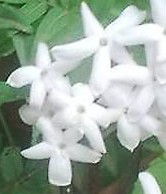
A native of Arabia, this tropical jasmine is widely grown in Spain, Italy and the French Riviera both for it garden value and its essential oil which is used in perfume. This species is sometimes considered a variety of J. officinale.
-
Flower Color: White
Size: 6-12’ long
Hardiness: Zones 9-10
Common Jasmine aka Poet’s Jasmine (Jasminum grandiflora)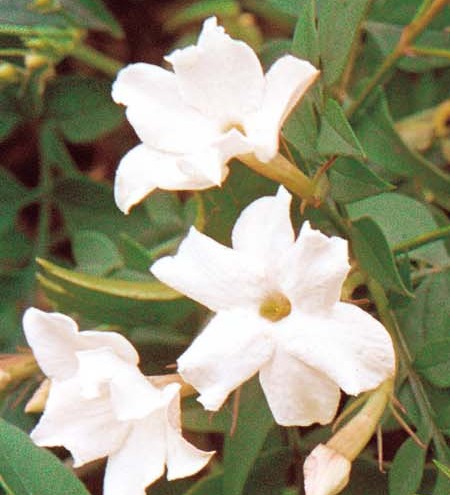
A vigorous climber, common jasmine can grow up to 30 feet long. Several attractive varieties are available including J. o. affine that has larger flowers with a pink blush, and ‘Aureum’ with gold splashed leaves, and Argenteovariegatum’ with white-marked leaves.
-
Flower Color: White or white with pink blush
Size: 20-30 ‘ long
Hardiness: Zones 8-10
Arabian Jasmine (Jasminum sambac)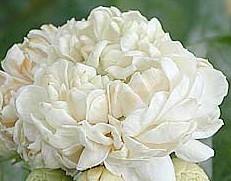
A native of Southeast Asia, this evergreen jasmine was brought to Arabia and from there to Europe when the Arabs took over Spain. It is cultivated for making perfume and tea. Two outstanding cultivars are ‘Maid of Orleans’ with very large overlapping extra petals, and ‘Grand Duke of Tuscany’ that is fully double but has less fragrance than other jasmines.
-
Flower Color: White
Size: Up to 10’ tall
Hardiness: Zones 9-10
Pink Jasmine (Jasminum polyanthum)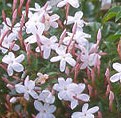
This evergreen jasmine from China produces pink buds in late winter or early spring which open to white flowers. This jasmine is the most popular kind in the US especially as a house plant; one plant can fill a room with fragrance.
-
Flower Color: Reddish pink buds opening to white flowers
Size: 25’ tall if grown outdoors
Hardiness: Zones 9-10
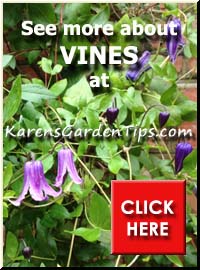 Yellow Jasmine (Jasminum floridum)
Yellow Jasmine (Jasminum floridum)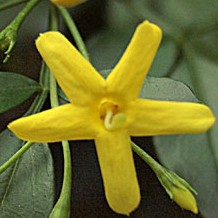
Yellow jasmine is one of several jasmines with yellow flowers and should not be confused with Confederate jasmine which is not a true jasmine. Yellow jasmine is evergreen and produces an abundance of flowers in late summer and early fall. The dark green leaves are especially attractive with the bright yellow flowers.
-
Flower Color: Yellow
Size: 8’ tall
Hardiness: Zones 8-11